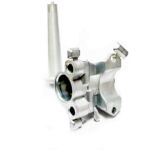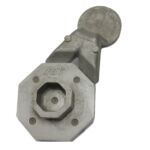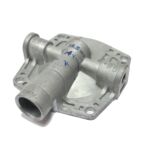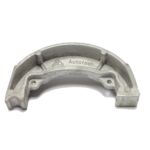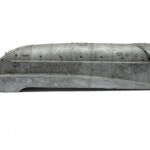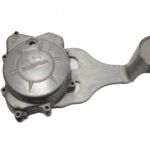Die-cast Products
The die casting process involves the use of a furnace, metal, die casting machine, and die. The metal, aluminum or zinc, is melted in the furnace and then injected into the dies in the die casting machine. There are two main types of die casting machines – hot chamber machines used for alloys with low melting temperatures such as zinc, and cold chamber machines used for alloys with high melting temperatures, such as aluminum. The differences between these machines is the way the machine inject the molten metal, the molten metal is constantly in contact with the casting chamber, whereas cold chamber does not. However, in both machines, after the molten metal is injected into the dies, it rapidly cools and solidifies into the final part, called the casting.
Die casting is mainly used for large series production, for many components of the same type to be cast. The die casting process is particularly suitable for the production of light weight and thin wall components. Most commonly, die cast components are manufactured for the automotive industry, such as wheels, blocks, cylinder heads, valve blocks and manifolds. The use of aluminum parts leads to a reduction in the weight of the vehicles and thus to a reduction in fuel consumption. In addition, there are other industries in which die cast parts are used:
- Aerospace
- Domestic Appliances
- Furniture
- Power Tools
- Electronics
- Machinery
- Lighting Technology
The dies into which the molten metal is injected are the custom tooling used in this process. The dies are typically composed of two halves – the fixed-side die, which is mounted onto a stationary platen, and the moving-side die, which is mounted onto a movable platen. This design allows the die to open and close along its parting line. Once closed, the two die halves form an internal part cavity which is filled with the molten metal to form the casting. This cavity is formed by two inserts, the cavity insert and the core insert, which are inserted into the cover die and ejector die, respectively. The cover die allows the molten metal to flow from the injection system, through an opening, and into the part cavity. The ejector die includes a support plate and the ejector box, which is mounted onto the platen and inside contains the ejection system. When the clamping unit separates the die halves, the clamping bar pushes the ejector plate forward inside the ejector box which pushes the ejector pins into the molded part, ejecting it from the core insert.
